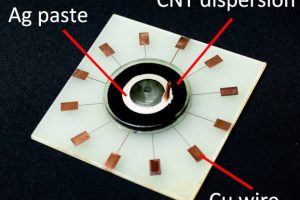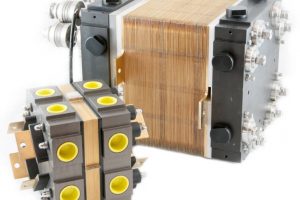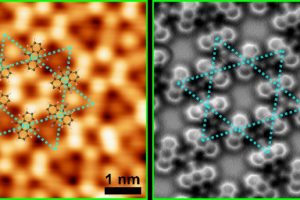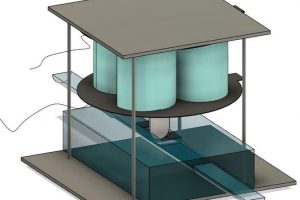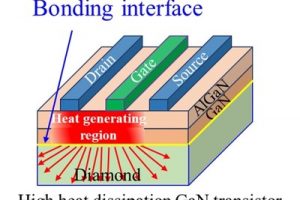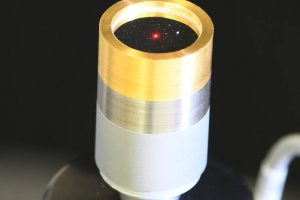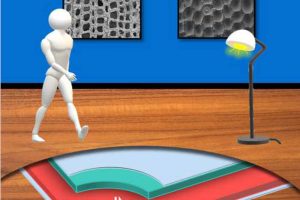Researchers at Yokohama National University have created a liquid-based tilt sensor that only needs simple interface electronics – some 10MΩ resistors and a Microchip ATmega microcontroller in the demonstrator. Although simple in theory – an air bubble and conductive liquid sealed in a chamber surrounded by electrodes – electronic levels are more complex in practice. If the liquid is an ...
Research
The latest electronics research news from within the industry and universities from around the world.
Viewpoint: How to test and evaluate quantum technologies
How quantum technologies can be tested and evaluated for commercialisation is explained by Dr Rhys Lewis, Head of NPL’s Quantum Metrology Institute. The National Physical Laboratory (NPL) is the UK’s National Metrology Institute and home to the Quantum Metrology Institute (QMI). The QMI brings together all of NPL’s cutting-edge quantum science and metrology research and provides the expertise and facilities ...
Imec joins with Neurogyn for pelvic nerve stimulator implant development
Imec is co-developing with Swiss medtech specialist NeuroGyn an implantable device for peripheral nerve stimulation. NeuroGyn specialises in neurostimulaton and surgical solutions for pelvic nerve disorders. Leveraging Imec’s expertise in ultra-low power wireless communication and powering, the new implant aims at prolonging the lifetime of the device while lowering its cost, making it suitable at the point of need. Clinical ...
Imec backs $12m Axelera AI seed round
Axelera AI has closed a seed investment round of $12 million backed by Imec, Bitfury and Innovation Industries Fund. Axelera, led by CEO Fabrizio Del Maffeo (pictured), was incubated by Bitfury Group in 2019, formerly operating as Bitfury AI until the company came out as an independent entity this year. Axelera joined forces with imec in early 2020 to develop computing ...
Peering into the finer details of hydrogen fuel cells for trucks and busses
Fuel cell control systems will need to be highly sophisticated if the technology is going to find its way into transport, according to German hydrogen and fuel cell research centre ZBT, which is developing it for trucks and busses. In hydrogen fuel cells, hydrogen is fed to the anode while air is fed to the cathode. An anode catalyst, typically ...
Non-magnetic 2-d materials yield designer magnetic properties for spintronics
Scientists in Australia have opened the door to self-assembling controllable nano-scale electronic and spintronic devices by discovering how magnetism arises in 2-d ‘kagome’ metal-organic frameworks. Kagome materials have repeating pattern of hexagons and smaller triangles, with the hexagons touching at their tips (images below). The word is Japanese, relating to a basket weaving pattern. In this case, the metal-organic is ...
Pliable electro-mechanical actuator suits soft robots
Harvard University has improved the presure capability of elastomeric valves, avoiding the choice between soft but weak valves, or capable but rigid valves, in soft robotics, it said. “Today’s rigid regulation systems considerably limit the adaptability and mobility of fluid-driven soft robots,” said Professor Robert Wood of Harvard’s school of engineering and applied sciences (SEAS). “We have developed soft and lightweight ...
Add the speed of GaN to the thermal conductivity of diamond
Seeking a route to high-performance power semiconductors, scientists in Japan have bonded gallium niride to a diamond substrate – the latter an insulator whose thermal conductivity is many times that of copper or silver. “The researchers succeed in the direct bonding of diamond and GaN at room temperature, and demonstrate that the bond can withstand heat treatments of 1,000℃, making ...
Laser metrology speeds microphone calibration
Laser measurement can calibrate a precision microphone as well as traditional techniques, according to the US National Institute of Standards and Technology (NIST). Such calibration is required in standards laboratories so that the microphones in sound-level meters and hearing aid testers, for example, can be set-up at the other end of the calibration chain. Traditional ‘comparison calibrations’ (see below) involve ...
Updated: Modified wood turns force into electricity
The triboelectic effect can be enhanced in wood so that it generates small amounts of electricity when stepped on. Two layers of wood are required, one spin-coated with PDMS (polydimethylsiloxane) – an electron acceptor on contact (‘tribo-negative’) – and the other with nanocrystals of ZIF-8 grown in one surface – ZIF-8 (zeolitic imidazolate framework-8) is an electron donating (‘tribo-positive’) ‘metal-organic ...
 Electronics Weekly Electronics Design & Components Tech News
Electronics Weekly Electronics Design & Components Tech News
